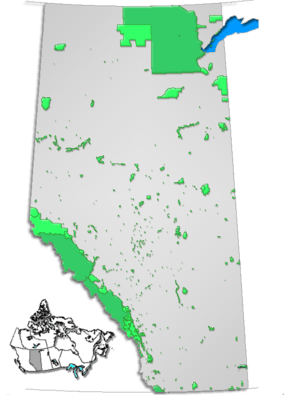Royal Alberta Museum
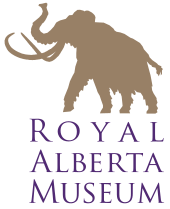 | |
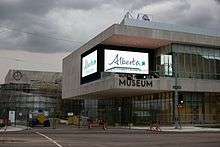 New building in August 2016 | |
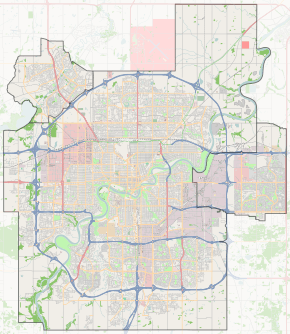 Location in Edmonton | |
| Former name | Provincial Museum of Alberta (1967-2005) |
|---|---|
| Established |
6 December 1967 (Old building) December 2017 (New building) |
| Dissolved | 5 December 2015 (Old building) |
| Location |
12845 102 Avenue NW Edmonton, Alberta, Canada T5N 0M6 |
| Coordinates | 53°32′49″N 113°29′20″W / 53.5470651°N 113.48885°WCoordinates: 53°32′49″N 113°29′20″W / 53.5470651°N 113.48885°W |
| Type | Natural history, Human history |
| Accreditation | Royal patronage, Provincial historic site |
| Key holdings | Big Things 1-4 |
| Collections | Cultural studies, Earth science, Life science |
| Collection size | +10 million[1] |
| Director | Chris Robinson[2] |
| Curator | Colleen Steinhilber[2] |
| Architect |
Raymond O. Harrison (1967) Ledcor, DIALOG (2017)[3] |
| Owner | Government of Alberta |
| Public transit access | Edmonton Transit System |
| Nearest parking | ~3,000 offsite parking stalls within 500 metres (1,600 ft) |
| Website |
royalalbertamuseum |
The Royal Alberta Museum (RAM) (formerly the Provincial Museum of Alberta) is a museum of natural history and anthropology.
The newly constructed museum, is located in Downtown Edmonton, north of City Hall, and East of CN Tower on the northwest corner of 103A Avenue and 97 Street. Construction was completed on August 16, 2016, and is expected to open to the public in late 2017.[4] The total cost of the new building and moving is estimated around CAD$375.5 million, with $253 million from the Government of Alberta, and $122.5 million from the federal government Building Canada Fund.[5]
The Glenora building had a natural history exhibit, a wildlife exhibit ("Wild Alberta"), an entomology exhibit, and the Syncrude Gallery of Aboriginal Culture, as well as some smaller displays. The museum also has an entomology collection and an arachnology collection. The Museum also had rotating galleries that welcomed various travelling exhibits as well as exhibits created in house by the museums curators. Also on the premises is Government House which is used by the Alberta Government Caucus.
History
The Canadian Federal Government’s Confederation Memorial Centennial Program and the Government of Alberta began planning for a museum in 1950. In 1962, they hired Raymond O. Harrison, an Australian architect who had been involved in the design of the Vancouver Maritime Museum to direct the planned museum.[6] Harrison was given 5 million dollars house and staff the museum as well as to build the collections.[7]
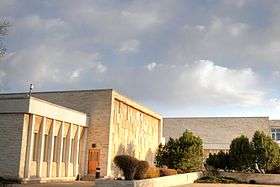
The museum opened to the public December 6, 1967 as the Provincial Museum of Alberta. On opening day, the museum's main floor featured galleries presenting the fur trade; native peoples of Alberta; early photographs of aboriginal people taken by Ernest Brown and Harry Pollard. Second floor galleries were less incomplete, but featured exhibits on agriculture; "pioneer" life; and industry and commerce.[8] The museum expanded through the 1960s and 1970s with more exhibits, curatorial programs and staff. In 1968, new exhibits portraying Alberta's dinosaurs and "Adaptations for Survival" were added to the natural history section, and permanent exhibits of "Vehicles of Alberta's Past", "Uniforms of RCMP Superintendant H. C. Forbes", "R. R. Gonsett, Inventor" and "Early Building in Saskatchewan" were added to the human history section.[8] In 1969, exhibits on volcanos, the thrush family were added to that natural history gallery, and displays of "Domestic Artifacts of Utility", the history of aboriginal people (including a display of Blackfoot clothing), and new agricultural artifacts were added to the human history gallery. The same year, a diorama of Pronghorns was created as the first of sixteen planned displays of Alberta's natural habitat.[8]
Paid admission began in 1990, and to increase its audience the ground floor Indian Gallery was removed and the space used for feature exhibition space.[7] In 1991, the mammal and bird gallery was upgraded with a display on "Survival and Reproduction", and the following year the "Beauty and Science of Birds" exhibit was built, including three new dioramas and a "Naturalist's Study".[8] A temporary exhibit called "The Bug Room" in the summer of 1992 featured live insects, and it was so successful that the museum decided to bring it back as a larger and permanent component of the museum in 1993.[8] A new permanent "Earth Science Gallery" was partially opened in December 1993, though not fully completed until the following May.[8] Also in 1993, the museum launched the "In All Their Finery" exhibit of aboriginal artifacts as the first phase of the larger "Syncrude Gallery of Aboriginal Culture." The complete Syncrude gallery was inaugurated years later in November 1997.[8] This gallery was later complemented with a large purchase from the family of James Carnegie at a Sotheby's auction on 8 May 2006. The sale of the "James Carnegie Collection" was billed as the most significant auction of North American Indian artifacts to date, including a prized beaded dress collected in 1859 which cost USD $497,600.[9]
In 2003, the Habitat Gallery was greatly renovated into a new "Wild Alberta" interactive exhibit.[8]
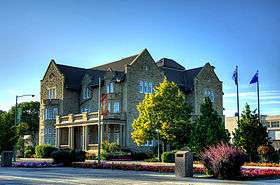
Between 1989 and 2001, 175 travelling exhibitions were displayed in this area. Some of which include: Prehistorics Gigantics (1990), Whales! Bigger than Dinosaurs (1992), Sharks: Facts and Fantasy (1993), Masters of the Night: The True Story of Bats (1994), Camosaurs! (1995), Bugsworld (1996), Genghis Khan (1997), Syria-Land of Civilizations (2001) and International Wildlife Photographer of the Year (2003).[10]
From 2002 to 2006, the Royal Alberta Museum hosted the North Edmonton Sculpture Workshop's groundbreaking "Big Things" outdoor sculpture exhibition series on the South Terrace.[11][12][13][14][15][16][17]
In 2005, Alberta's centennial year, the NESW produced the RAM's Alberta Centennial Sculpture Exhibition,[11] and on 24 May 2005, Queen Elizabeth II visited, bestowing royal patronage.[18]On December 6, 2015 the museum closed down 48 years after its opening in 1967 to move to a new location.[19]
New building & location
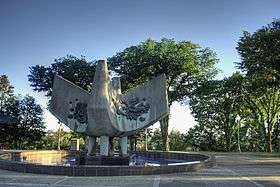
In April 2011, it was announced that a new building for the Royal Alberta Museum would be built in Downtown Edmonton, north of the city hall and Law Courts, and east of the CN Tower, on the land formerly occupied by Canada Post's Edmonton station. The 36,000 m2 (390,000 sq ft) building, which will contain twice as much gallery space, is estimated to cost $340 million, and be completed in 2015. Premier Stelmach and the Alberta government have said that the location of the new building could be used for the terminal of an Edmonton—Calgary high speed rail line, while the old location will be the site for a new residence for the Lieutenant Governor.[20][21]
Mission and vision
- Mission: "To preserve and tell the story of Alberta - the experience of people and places over time - and inspire Albertans to explore and understand the world around them."[10]
- Vision: "To help Albertans play an active and informed role in shaping their world by encouraging understanding and appreciation of Alberta’s natural and cultural heritage."[10]
Collection organization
The collections are divided into four main categories:
- Life Science: Botany, Ichthyology/Herpetology, Invertebrate Zoology, Mammalogy and Ornithology Program – 577,745 objects
- Earth Science: Archaeology, Geology, Quaternary Paleontology, and Quaternary Environments - 9,224,075 objects
- Human History: Ethnology, Cultural Studies (formerly Folk Life), Military and Political History (formerly Government History) and Western Canadian History - 137,610 objects
- Collections Services: Collections Management, Conservation, Information Resource Management, Resource Library - 70,103 objects[10]
Glenora location galleries
- Wild Alberta Gallery: This gallery contained dioramas, which showed Alberta animals in replicated natural habitats. The gallery also gave visitors information on the ecosystems of Alberta and how animals, microorganisms and humans interact in the environment.
- Syncrude Gallery of Aboriginal Culture: This gallery explored the history of North American Aboriginals with over 3000 artifacts spanning 11,000 years of history. It started with the time of the last ice age, and explored aboriginal settlement, livelihood and culture.
- Natural History Gallery: This gallery was home to the popular "Bug Room", where some of the world's largest bugs are on display.[22] The gallery also boasted an area dedicated to the vegetation of Alberta as well as the birds that make Alberta home. The entrance to the gallery housed a large geology exhibit containing gems and rocks, as well as a collection of the rocks that make up the landscape of Alberta.
See also
References
- ↑ "Quick Facts". Royal Alberta Museum. Government of Alberta. Retrieved 5 September 2016.
- 1 2 "Royal Alberta Museum - Staff". Alberta. Government of Alberta. Retrieved 5 September 2016.
- ↑ "Background - Architectural Concept". Royal Alberta Museum. Government of Alberta. Retrieved 5 September 2016.
- ↑ "Milestones". Royal Alberta Museum. Government of Alberta. Retrieved 5 September 2016.
- ↑ "Museum on the Move FAQ". Royal Alberta Museum. Government of Alberta. Retrieved 5 September 2016.
- ↑ Raymond O. Harrison fonds, Heritate Resources Management Information System, Provincial Archives of Alberta
- 1 2 History, Royal Alberta Museum]
- 1 2 3 4 5 6 7 8 Past Exhibits, Royal Alberta Museum
- ↑ The Globe and Mail. Museum digs deep to acquire native artifacts
- 1 2 3 4 "Royal Alberta Museum Website". Retrieved 21 March 2012.
- 1 2 Royal Alberta Museum: Past Exhibits
- ↑ Gilbert Bouchard, “Come to Expect ‘Big Things’”, Edmonton Journal, July 19, 2002
- ↑ Erik Floren, “Big Impressions”, The Edmonton Sunday Sun, July 28, 2002
- ↑ Mike Berezowsky, “Sculpture Exhibit Gets a Big Response”, Edmonton Examiner, September 11, 2002
- ↑ "Multiple Directions Merge In Single Exhibit”, Edmonton Journal, October 5, 2007
- ↑ Gilbert Bouchard, “Bianca Khan's One-Tonne Challenge”, Edmonton Journal, July 23.
- ↑ Mari Sasano, “The Museum Wants You To Think Big. Really Big”, Edmonton Journal, August 25, 2006
- ↑ Royal Alberta Museum. Royal Visit
- ↑ Heidenreich, Phil (7 December 2015). "Edmontonians say farewell to Royal Alberta Museum in Glenora". Corus Entertainment Inc. Global News Edmonton. Retrieved 5 September 2016.
- ↑ "Royal Alberta Museum to be built in downtown Edmonton". CBC News. April 7, 2011. Retrieved April 7, 2011.
- ↑ "Downtown Edmonton site of new RAM". Edmonton Journal. April 7, 2011. Retrieved April 7, 2011.
- ↑ http://www.royalalbertamuseum.ca/gallery/nathist/info.htm
